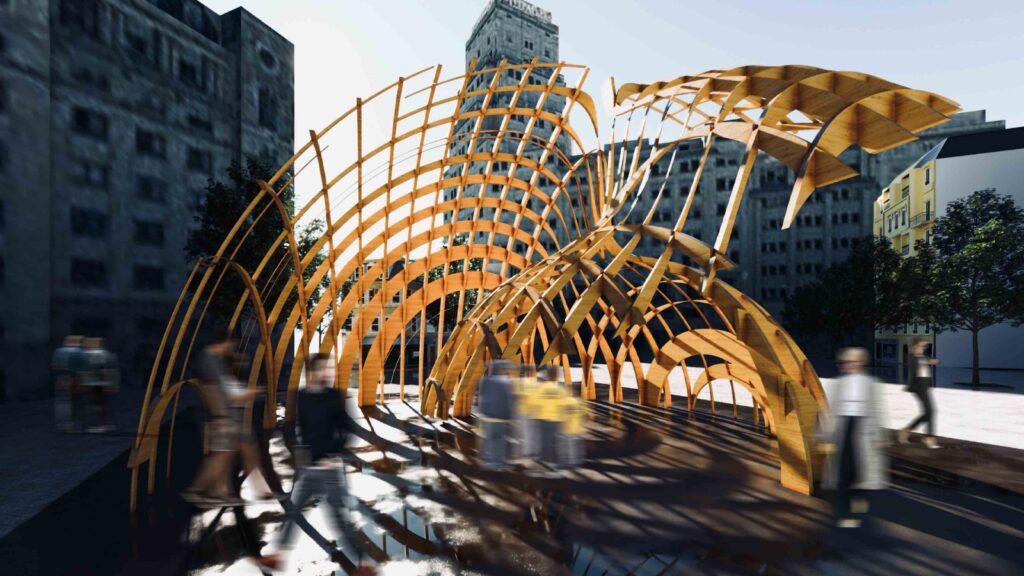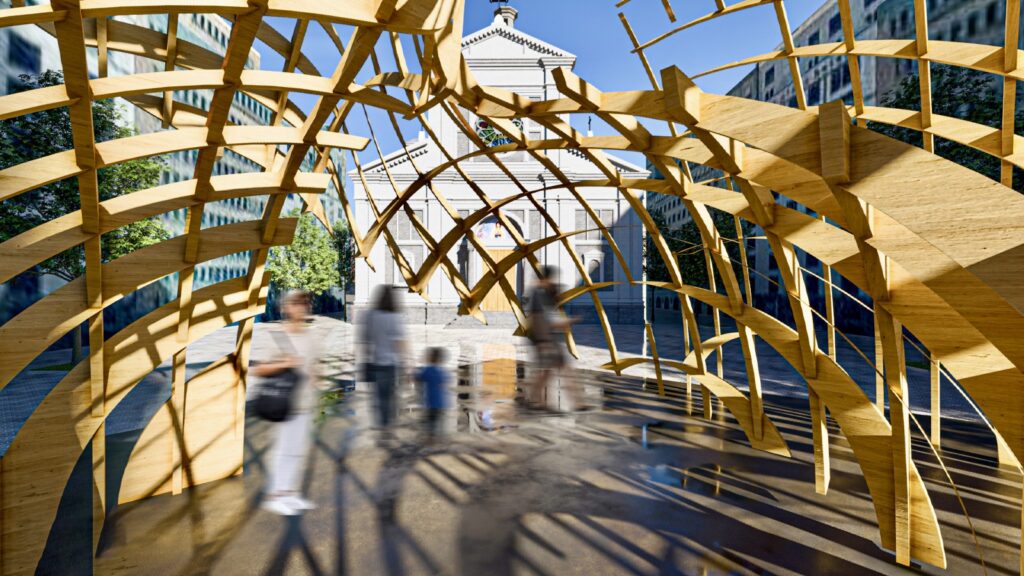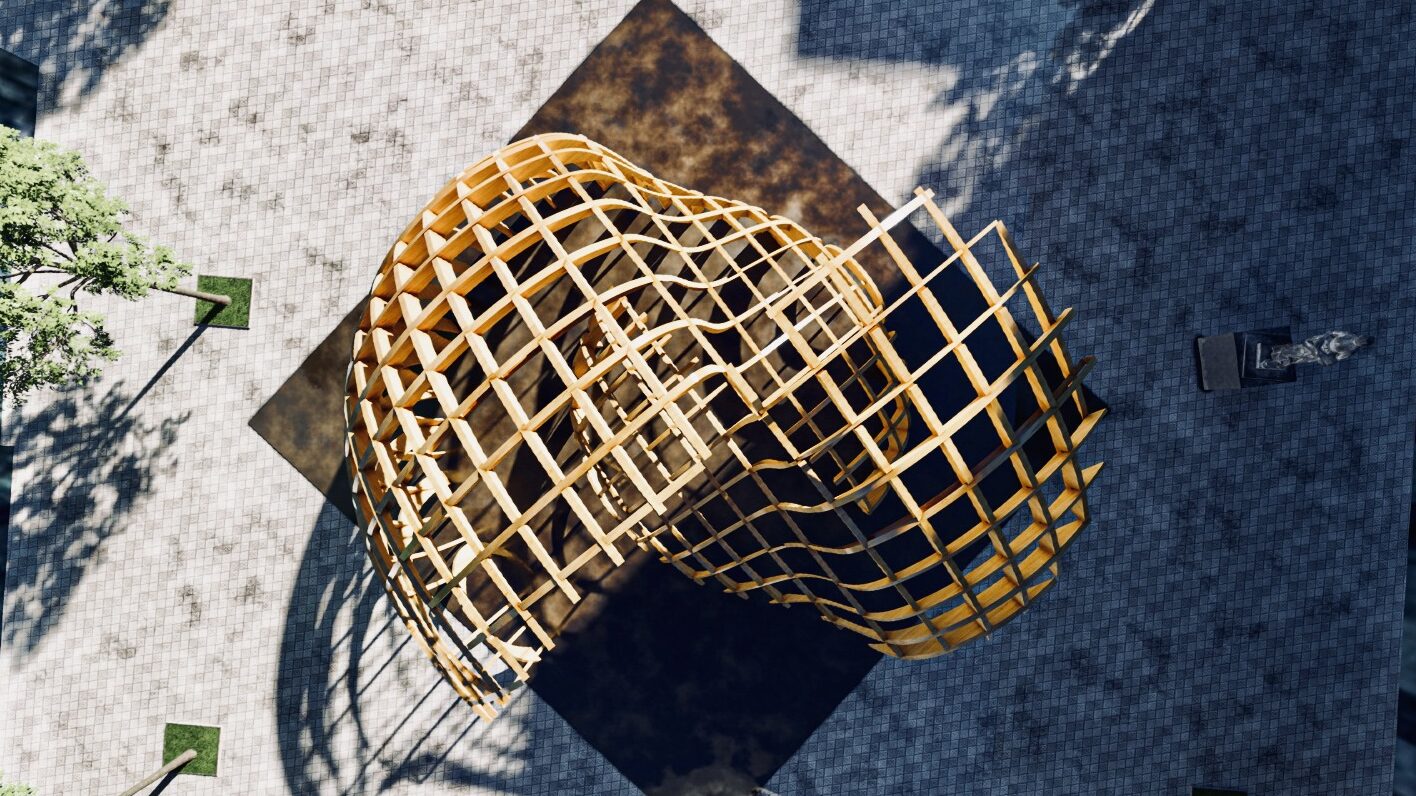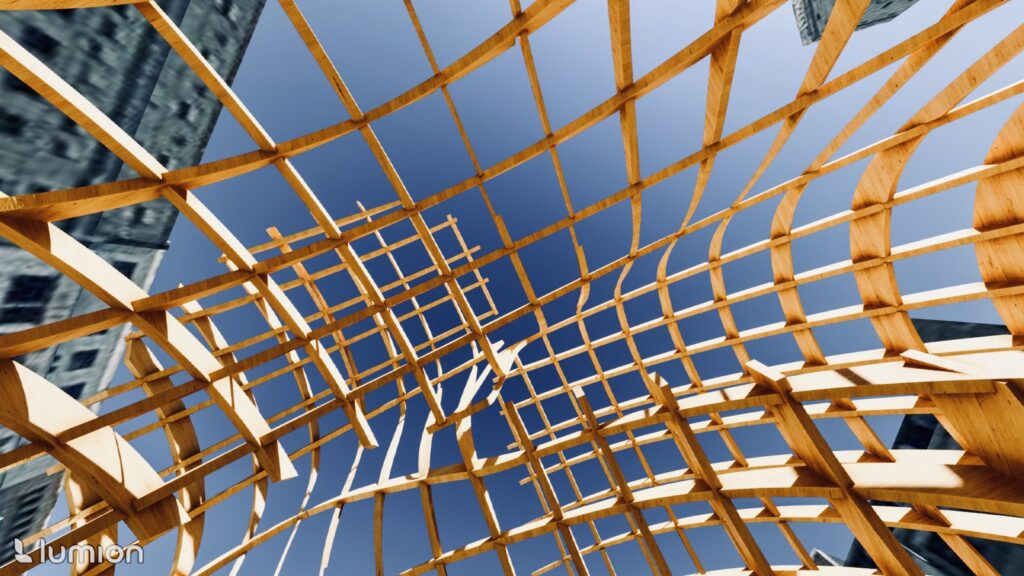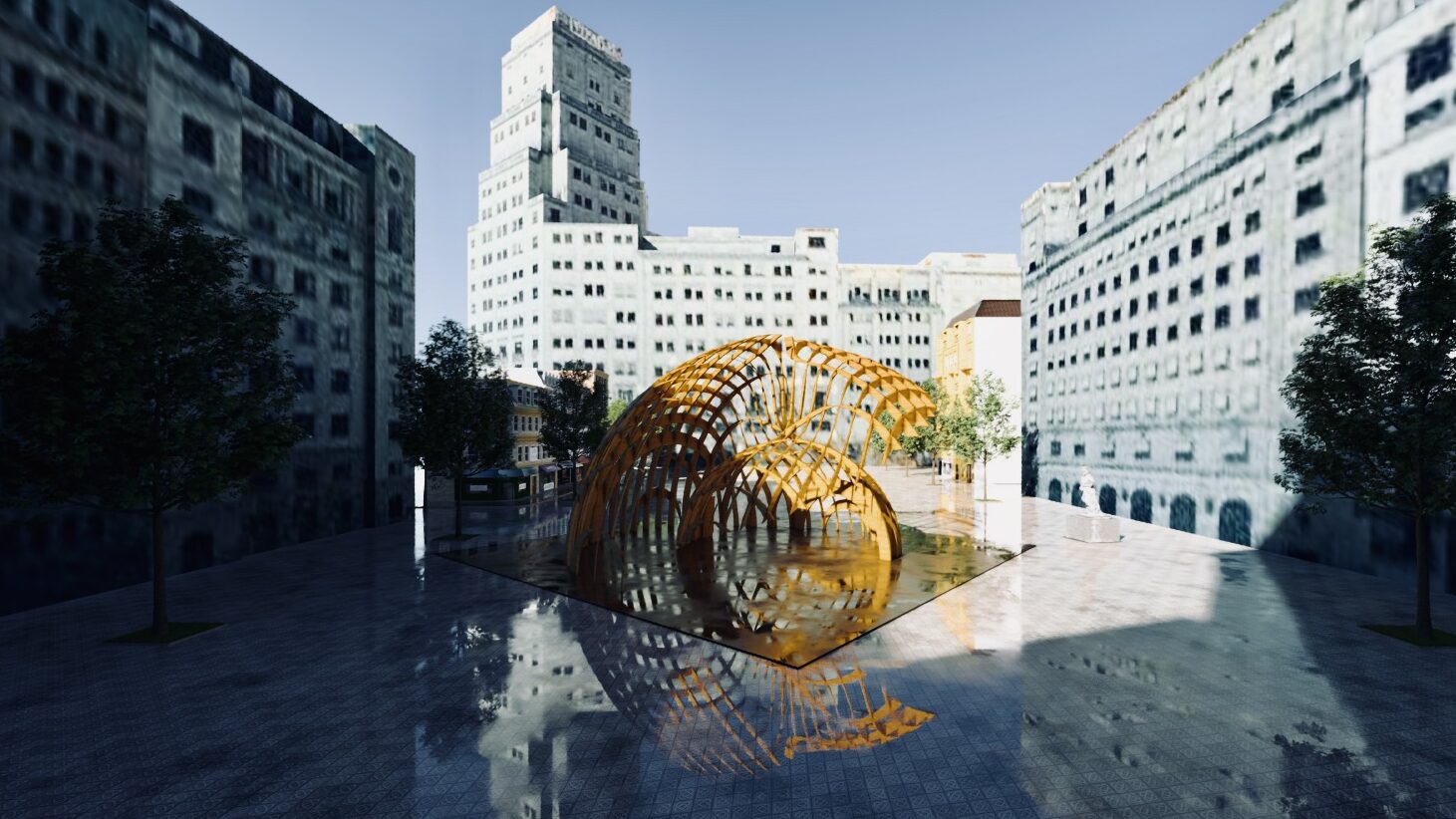Previously known as Echo De Rut, our pavilion design in Plaça de la Virreina has undergone a thoughtful revision, focusing on both improved fabrication methodology and greater environmental sensitivity. The initial proposal, composed of thin copper fragments loosely assembled, proved to be premature—both structurally unrealistic and impractical for real-world construction. Moreover, copper is not an environmentally friendly material and would have created an uncomfortable microclimate, especially in Barcelona’s summer heat.
With these concerns in mind, we reimagined the pavilion with a more feasible and responsible approach. The new strategy prioritizes sustainable materials and construction logic while preserving the original intent: an airy, breezy, and open structure that offers shade and comfort to the local community without compromising on aesthetic quality.

Design Shift
We chose to shift our fabrication strategy to a waffle structure using wood for three key reasons:
- Design for Disassembly – The waffle system allows for modular assembly, making the pavilion easy to construct, dismantle, transport, and potentially reuse in other contexts.
- Sustainable Material Choice – Wood is a renewable resource that is locally available and widely used in Spain, making it a more environmentally conscious alternative to materials like copper.
Ease of Fabrication – The waffle system can be efficiently produced using CNC milling, streamlining the process and reducing human error in assembly.
However, the waffle approach also comes with challenges. To effectively filter solar radiation and create comfortable shaded spaces, the elements must be quite thick. This significantly increases the volume of wood required, raising concerns about material use and structural weight—issues we are actively addressing in our ongoing design refinements.
Our goal is to use Wallacei to optimize the pavilion’s form for two key outcomes: minimizing solar radiation to enhance thermal comfort, and reducing material usage for greater sustainability. We aim to design a pavilion that is both climatically responsive and resource-efficient.
Site Analysis
Plaça de la Virreina and Sant Joan de Gràcia Church
Plaça de la Virreina is a historic and culturally significant square located in the Gràcia district of Barcelona, known for its serene atmosphere and vibrant community life. The square is distinguished by the Sant Joan Baptista de Gràcia Church, a neo-Gothic landmark that adds historical depth to the area. Surrounded by local cafés, shaded seating areas, and residential buildings, it serves as a central gathering point for both residents and visitors. The square is particularly lively during the Festa Major de Gràcia, an annual festival celebrated in August, during which the neighborhood is transformed with colorful decorations, live performances, and community-led activities. Throughout the year, Plaça de la Virreina also hosts cultural events, small markets, and artistic performances, reinforcing its role as an essential public space within Barcelona’s urban fabric.
ure and humidity. Most data points fall within a moderate comfort zone, with dry bulb temperatures between 15°C and 30°C and humidity ratios below 0.015 kg/kg.
This vertical plot shows the hourly variation of dry bulb temperature on May 24th. Temperatures start at around 15°C in the early morning and rise steadily, peaking near 25°C in the late afternoon, before cooling again towards evening.
Computation
General Workfolw

1| Form Finding
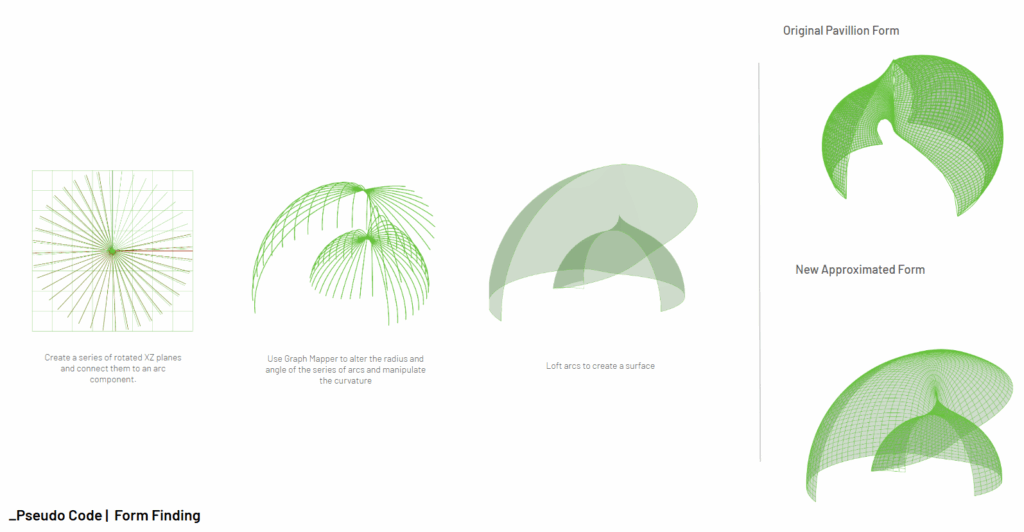
Our first goal was to simplify the form, while maintaining the orginal design concept of a twisting cloth, giving homage to the statue of Rut.
2| Waffle Structure and Parametrization
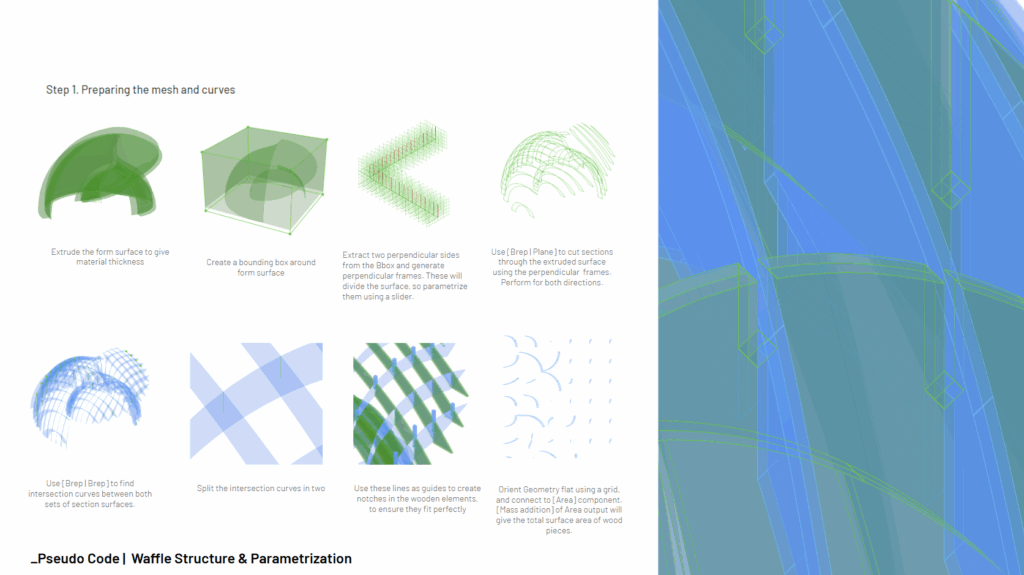

While setting up the code for the waffle structure, it was important to make it parametrize the dimensions of the wooden divisions to allow Wallacei to adapt the sizing based on th eoptimal environmental conditions and avoid material waste.
3| Environmental Analysis

4| Dual Objective Optimization with Wallacei
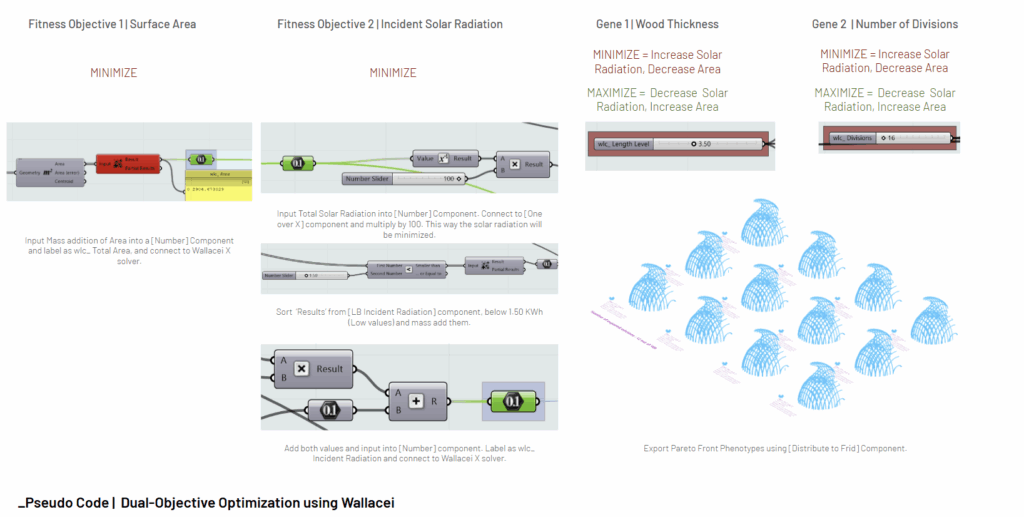
Wallacei Results
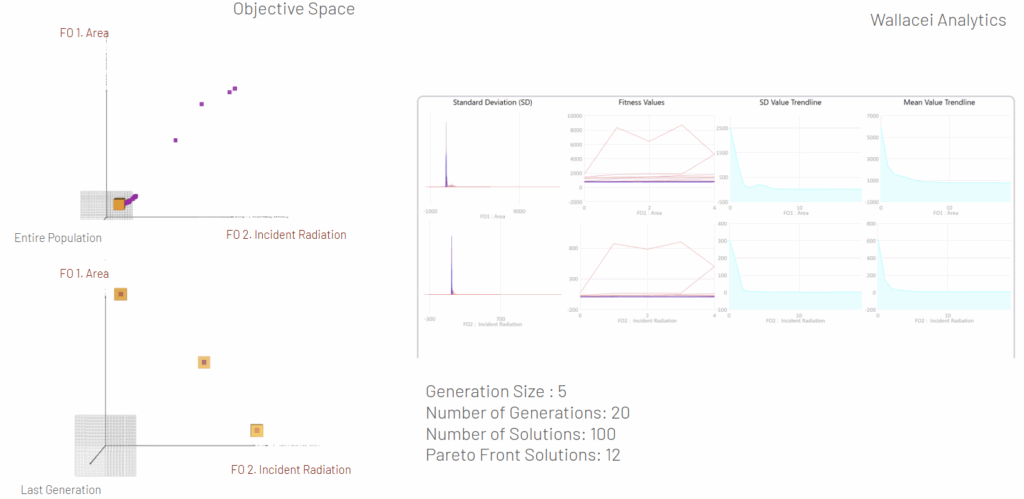
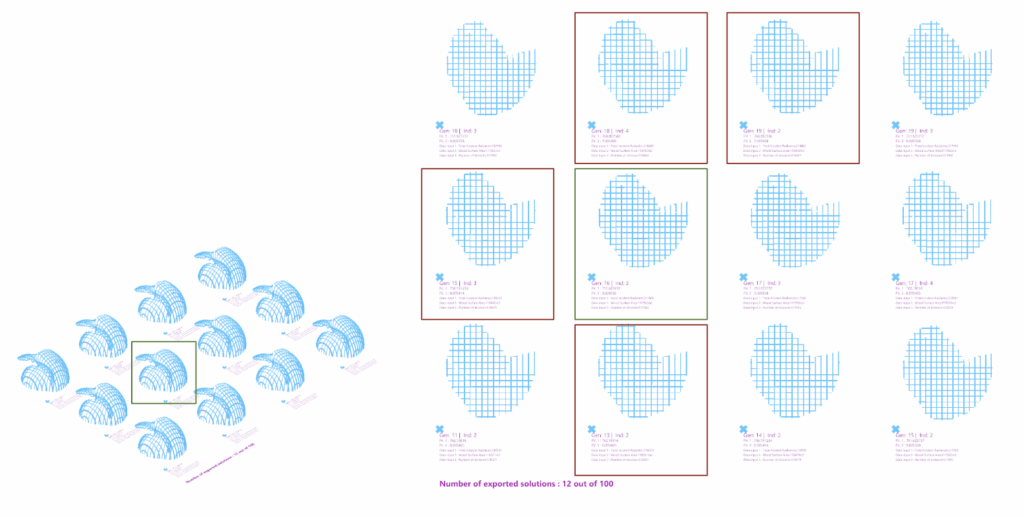
Gen. 16 Ind. 3 was chosen as the optimal design solution because it offered a great balance between the two fitness objectives. Strategically, we opted for thicker/longer pieces as this would ensure the pavilion’s overall stability.
Gen 15 Ind 3, Gen 18 Ind 4, Gen 19 Ind 2, and Gen 13 Ind 2 were disregarded as they had many pieces that were not attached in the waffle (the perpendicular sides do not meet) and this would not work structurally.
Renders
